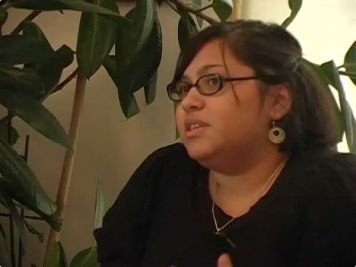 Academic Researchers’ Roles in Participatory Action Research, Theory Development and the Improvement of Community-based Health Projects
Academic Researchers’ Roles in Participatory Action Research, Theory Development and the Improvement of Community-based Health Projectsby Keiko Goto, PhD (Chico State University, USA)
Peer Reviewed
This article examines the typology of participatory approaches used in a youth health project based on the author’s experience as a researcher and facilitator in the “What every adolescent has a right to know” initiative for HIV/AIDS prevention among youth. In this case study, timely feedback of academic research, which was conducted concurrently with the facilitation of the project, provided important insights that helped to better conceptualize the goals of the project and improved its functioning.
 Knowledge Transfer in Community-Based Organizations: A Needs Assessment Study
Knowledge Transfer in Community-Based Organizations: A Needs Assessment StudyBy Dr. Christian Dagenais (Université de Montréal, Canada)
Peer Reviewed
Research-based knowledge remains relatively underutilized by social practitioners. Many studies have shown that, in order to be used, research results have to be compatible with users’ needs and beliefs. The purpose of this needs assessment study was to identify the priority needs of community-based organization practitioners in terms of new research-based knowledge.
Read more... Participatory Research into Community Psychology within a Local Context
Participatory Research into Community Psychology within a Local ContextBy Drs. Caterina Arcidiacono & Fortuna Procentese (University of Naples Federico II, Italy)
Peer Reviewed
The aim is to present a series of participatory action research studies focused on town development and inhabitants’ needs. The paper discusses how to construct a field investigation that pays attention to people’s narratives, as well as how to elaborate a substantive theory, which is inductively derived from the study of the phenomenon.
The assessment of the trustworthiness of the intervention is also examined. For a better understanding of how to conduct an intervention in a local community, this paper deals with methodological questions concerning triangulation of sources and sampling strategies. Research instruments such as narratives, community profiles, and SWOT (Strengths, Weaknesses, Opportunities, Threats ) analysis are discussed as regards their use within grounded theory methodologies and participatory action research.
 Rites of Passage as a Framework for Community Interventions with Youth
Rites of Passage as a Framework for Community Interventions with YouthBy Drs. David G. Blumenkrantz & Marc B. Goldstein (The Center for the Advancement of Youth, Family & Community Services, and Central Connecticut State University, USA)
Peer Reviewed
This article discusses the potential value of adopting a rites of passage framework for developing community interventions for youth and suggests principles for its application. We propose a contemporary working definition of the concept, how it could reshape the way we approach community and youth development, and 20 core components of a rites of passage process developed from our work experience spanning over 40 years.
Read more...Have an idea for a interview of someone you admire and wish to share with others? Contact us! editor@gjcpp.org

This is an interview by Tom Wolff of Dolores Thibault-Munoz, a community activist and Executive Director of Cleghorn Neighborhood Center in Fitchburg Massachusetts (USA).
Watch the videoBy Liesette Brunson and Dyana Valentine
A recent report from the Pew Research Center suggests that online activities are becoming an increasingly popular way for people to keep informed about what is happening in their community (Smith, 2010). While many of us may know about social media such as Facebook, MySpace, Twitter, and LinkedIn, we may be less certain how to integrate these tools into our community work. There are many ways in which interactive “Web 2.0” sites and services create possibilities for relationship building, information-sharing, and collaboration. In this column, we highlight some of the ways in which these tools can be used for community practice and community building.
by Thomas Wolff
Reviewed by Adrienne Paine-Andrews
In “The Power of Collaborative Solutions: Six Principles and Effective Tools for Building Healthy Communities”, Tom Wolff provides a passionate and convincing case for using collaborative approaches to address our most intractable community problems. He offers personal reflection, case studies and tools based on his extensive experience to help us move toward more effective, sustainable, and collaborative solutions.
Read more...In this issue, you will find several articles that feature aspects of community practice from across the globe. In addition to these regular features, you may notice that we made a few improvements to the Journal web site. We now have the ability to leave comments and have conversations about any of the materials shared through the Journal. You will find it placed at the end of each article, video, or tool.